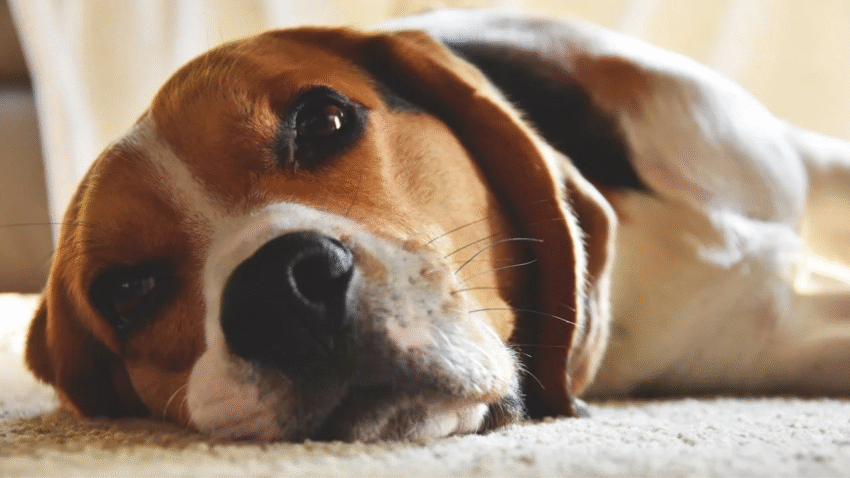Summer means sunshine, outdoor fun, and long walks—but it can also bring serious risks for your dog if you’re not careful. In this guide, you’ll learn how to protect your dog during hot summer months by keeping them cool, safe, and healthy. If you’ve ever worried about overheating, burnt paws, or dehydration, this article has you covered.
Why Summer Safety Matters for Dogs
Unlike humans, dogs can’t sweat through their skin. They rely mostly on panting and a few sweat glands in their paw pads to cool down. Because of this, they’re much more vulnerable to heat-related issues. Keeping your dog safe in summer helps prevent:
- Heat exhaustion or heatstroke
- Burns from hot pavement
- Dehydration
- Sunburn (yes, dogs can get sunburned!)
- Paw pad injuries
These problems can develop quickly—but they’re also easy to prevent with a few smart precautions.
Step-by-Step Guide to Keeping Your Dog Safe in Summer
Step 1: Adjust Walk Times
Avoid walking your dog during peak heat hours (10 AM to 4 PM). Instead:
- Walk early in the morning or late in the evening
- Stay in shaded areas when possible
- Avoid strenuous activity on hot days
Even if your dog seems eager, don’t overdo it. Short walks are safer than long ones in extreme heat.
Step 2: Check the Pavement Temperature
Hot asphalt can burn your dog’s paws in seconds. A simple test: place the back of your hand on the pavement. If you can’t hold it for 7 seconds, it’s too hot for your dog.
Protect their paws by:
- Walking on grass or dirt paths
- Using dog booties
- Applying paw balm for added protection
Step 3: Keep Them Hydrated at All Times
Water is your dog’s best defense against heat. Always:
- Carry water on walks and during car trips
- Provide multiple bowls of clean water at home
- Add ice cubes to their bowl on hot days
- Offer dog-safe hydration treats like frozen broth or watermelon (seedless, no rind)
If your dog isn’t drinking, try flavoring water with a splash of low-sodium broth.
Step 4: Provide a Cool, Shaded Rest Area
Whether you’re at home or outside, your dog needs a shady place to escape the sun.
- Set up a canopy, umbrella, or shaded dog tent
- Use a cooling mat or elevated dog bed
- Keep indoor spaces well-ventilated with fans or AC
Never leave your dog outside for long periods during heatwaves.
Step 5: Never Leave Your Dog in a Hot Car
Even with the windows cracked, a parked car can turn deadly in minutes. On a 30°C (86°F) day, a car can reach over 50°C (122°F) in just 10 minutes.
If you can’t bring your dog with you into a building, it’s safer to leave them at home in a cool environment.
Step 6: Watch for Signs of Overheating
It’s critical to recognize the early symptoms of heat exhaustion or heatstroke in dogs:
- Excessive panting or drooling
- Red or pale gums
- Vomiting or diarrhea
- Lethargy or wobbliness
- Collapse or seizures
If your dog shows any of these signs, move them to a shaded area immediately, offer water, and contact your vet right away.
Common Mistakes to Avoid
1. Shaving Your Dog’s Coat Completely
While trimming long coats may help, fully shaving your dog can remove their natural sun protection. Double-coated breeds rely on their fur to insulate from both cold and heat. Ask your groomer for a summer cut—not a shave.
2. Over-Exercising on Hot Days
Even a game of fetch can be too much in high temperatures. Know your dog’s limits and rest often.
3. Using Metal Bowls in the Sun
Metal water bowls can heat up and even burn your dog’s tongue. Stick to plastic or ceramic, and keep bowls in the shade.
4. Skipping Flea and Tick Prevention
Warm weather brings out more parasites. Continue using flea, tick, and heartworm prevention throughout the summer months.
5. Assuming Only Large Dogs Are at Risk
All dogs can suffer from heat-related issues, but flat-faced breeds (like Pugs, Bulldogs, and Boxers) are especially vulnerable due to restricted airways. Always take extra care with brachycephalic breeds.
Extra Tips & Recommendations
Offer Frozen Treats
Make DIY dog popsicles using:
- Unsalted chicken broth
- Peanut butter (xylitol-free)
- Mashed bananas
- Plain yogurt
Freeze in silicone molds or ice cube trays and serve as a cooling snack.
Use Dog Sunscreen (If Needed)
Dogs with light-colored fur or exposed skin (like the nose or ears) may be prone to sunburn. Use a dog-safe sunscreen and avoid products made for humans.
Install a Kiddie Pool or Sprinkler
Let your dog cool off with a splash session in a shallow pool or under a gentle sprinkler stream. Supervise closely to avoid overexcitement or swallowing too much water.
Conclusion
Hot summer months don’t have to be dangerous for your dog—as long as you stay prepared. Keep walks short, water flowing, and paws protected. Learn the warning signs of overheating, and make summer safety part of your regular dog care routine. With just a few small changes, you can keep your dog safe, cool, and happy all season long.
☀️ Want more seasonal dog care tips? Follow us for step-by-step guides on keeping your furry friend healthy year-round!
